Detroit Lions film review: 5 observations vs. Green Bay Packers
 Justin Rogers
Justin RogersAllen Park — It’s the bye week, which gives you an extra seven days to try to figure out these Detroit Lions.
It’s a team that's handled a pair of Super Bowl contenders led by future Hall of Fame quarterbacks with relative ease, while getting blown out at home by a rookie quarterback making his debut and allowing Cowboys running back Ezekiel Elliott to go off for a season-high 240 yards from scrimmage.

It’s enough of a conundrum to cost our country's greatest thinkers at least a few hours of sleep
But until the players return from their brief reprieve, a few days off mid-season, let’s take one last look at Sunday’s 31-23 win over the Packers.
Here are five observations from our weekly review of the film.
No laughing matter
Entering Sunday’s game, Packers safety Ha Ha Clinton-Dix was playing some of the best football of his young career. Through four games, he was leading the league in interceptions and was Pro Football Focus’ highest-graded player at his position.
But Lions quarterback Matthew Stafford took advantage of Clinton-Dix’s aggression, baiting the safety with his eyes multiple times to connect on throws. The prime example is Kenny Golladay’s 60-yard reception in the opening quarter, which set up Detroit’s second touchdown.
Taking the snap, Stafford’s head and body immediately angled to his right, where receiver Marvin Jones was alone with man coverage to that side. Clinton-Dix, as the lone, over-the-top support as the deep safety in a Cover-1 look, aggressively took two strides to that side of the field. That was all Stafford needed, quickly turning left and lofting a 50-50 ball for Golladay.
The Lions had three options to that side. Golden Tate was out wide, Golladay in the slot and tight end Luke Willson off tackle. Both Tate and Willson ran short routes, coming back toward Stafford at a five-yard depth. That left Golladay alone with rookie cornerback Josh Jackson.
The go route, which angled slightly toward the sideline, created further separation from the already out-of-position Clinton-Dix. The receiver went up, made an impressive high-point catch while Jackson went to the ground attempting to make a play on the ball, and once Clinton-Dix recovered enough to make a tackle, he was stiff-armed into the Ford Field turf by Golladay.
There were at least two other instances of Clinton-Dix guessing wrong based on incorrectly reading Stafford’s eyes. The safety was drawn away from Jones on a deep pass in the second quarter, a 39-yard completion that was wiped out by offsetting penalties.
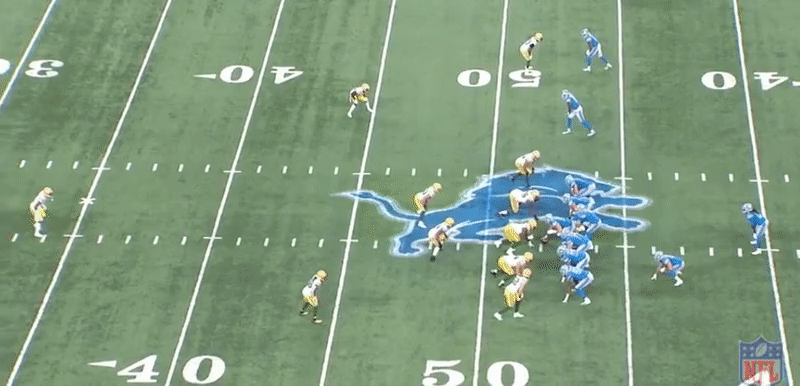
Stafford later managed to connect with Jones for an 8-yard touchdown at the end of the first half by looking down Willson and forcing Clinton-Dix to drive on the tight end’s out-breaking route. That created space in the middle of the field for Jones, running a dig across the back line of the end zone.
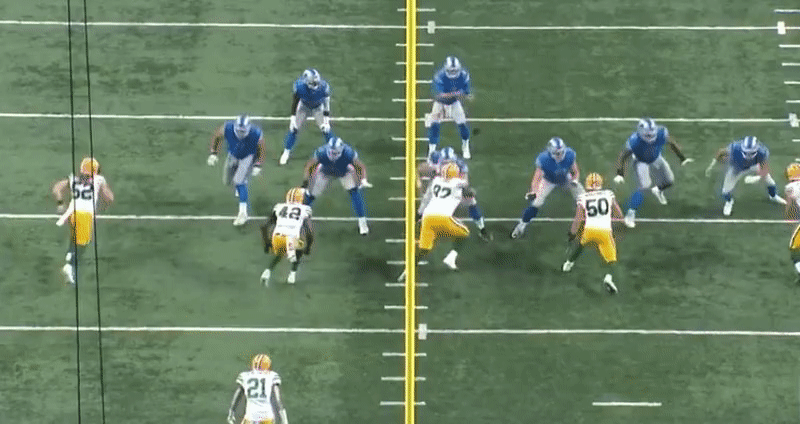
Slay uncharacteristically slain
All-Pro cornerback Darius Slay has earned his reputation as one of the league’s best cover corners with good reason. Not only did he lead the league in interceptions last season, he did it while shadowing a slate of top-tier receivers.
His ability to travel, accentuated by working out of the slot more this season, make him a rare breed of defensive back.
But on this day, Packers receiver Davante Adams proved to be Slay’s kryptonite. And the film shows the cornerback’s bad day could have been worse had quarterback Aaron Rodgers been a bit sharper.
Slay wasn’t responsible for all of Adams’ damage, most notably a pair of long receptions working against zone coverage looks that netted him 41 of his 140 yards. But those other 99 yards — including a 30-yard catch, a fourth-down conversion and a 12-yard touchdown — it all falls on Slay.
At least we can say he warned us, praising Adams earlier in the week for his ability to release off the line so well it can make a defender look crazy. That’s exactly where Slay had the most trouble, early in routes, where Adams would have him guessing wrong off the release, creating quick separation right after the snap. That was best highlighted on the scoring catch.
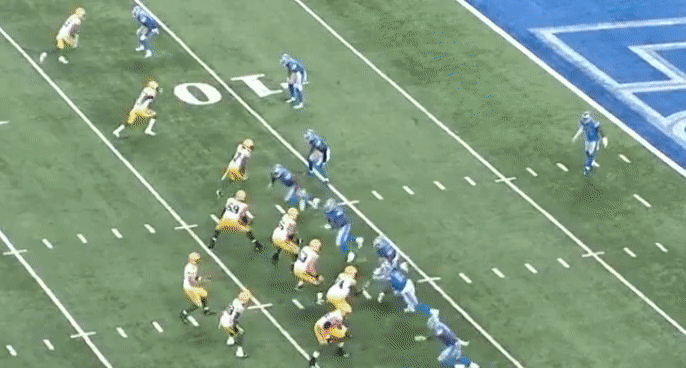
And as mentioned, things could have been much worse. Late in the first quarter, Slay got hung up in traffic playing off coverage while Adams ran a shallow crossing pattern. Despite being wide open, Rodgers never saw his top receiving threat, instead checking down to Jamaal Williams underneath to the same side, despite the back being well covered by linebacker Jarrad Davis. Had Rodgers gone to Adams, there’s a good chance the receiver scores on the play given there were no defenders within 15 yards.

Instead, the Packers settled for a field-goal attempt one play later, the first of four missed by kicker Mason Crosby.
In the third quarter, Adams ran a smooth double move on Slay, initially breaking his route inside at a 5-yard depth before sticking his foot in the ground and turning upfield. This time, Rodgers sees his receiver with the separation, but overthrows him, missing on a potential 36-yard scoring strike.
Powering up
The Lions’ inability to consistently convert in short-yardage situations was one of the top items the team addressed this offseason, bolstering the offensive line and signing 250-pound running back LeGarrette Blount. The fruits of those investments were evident against the Packers, as the Lions converted four times when needing one yard, including twice at the goal line.
Detroit set the tone for the success early, with Blount extending the game’s first drive. On the third-and-one play, the team overloaded to the left, with right tackle Rick Wagner lined up off left tackle and an offset-I, with fullback Nick Bellore, also to the left.
The Packers countered, loading up to that side. Pre-snap, Bellore shifted to the right and the run went that direction. Taking advantage of the lighter side of the box, the Lions quickly reestablished the line of scrimmage with its initial push and Bellore did a nice job getting a body on edge defender Clay Matthews, giving Blount just enough space to convert on the carry.
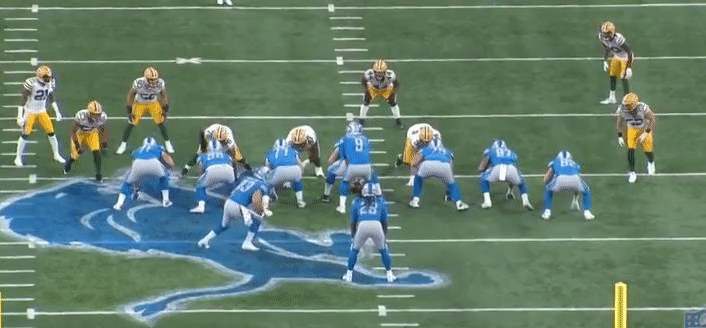
Blount’s next short-yardage effort wasn’t as pretty. It came on first-and-goal at the 1. The Lions lined up in an I, with three tight ends, the third being guard Joe Dahl. At the snap, guard Frank Ragnow barely got any of defensive tackle Dean Lowry, while center Graham Glasgow was stood up then knocked down by hard-charging linebacker Antonio Morrison.
Blount’s run, directly up the gut, only succeeded because Bellore came through the hole first, clearing out Morrison. Blount was tripped up by Lowry, Ragnow’s man, in the backfield, but was able to extend the ball across the goal line for the score.

Blount’s second touchdown, late in the first quarter, was successful due to a trio of successful blocks, including one by Golden Tate.
Running left, out of a single-back look, Blount hit the C gap between tackle Taylor Decker and tight end Levine Toilolo, who both did a nice job sealing their defensive assignment out of the lane. But it was Tate leading Blount through the hole. The slot receiver motioned inside pre-snap, lowered his shoulder and stymied safety Kentrell Brice at the goal line to ensure the run’s success.
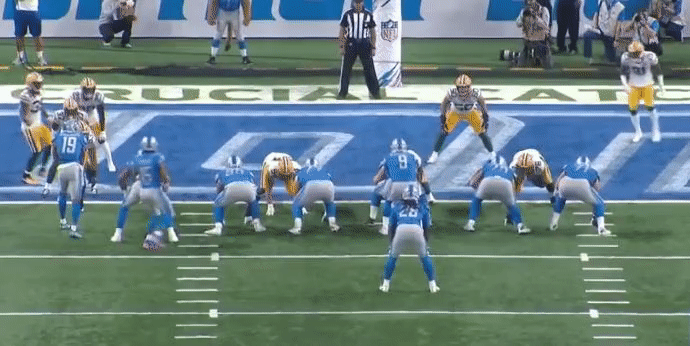
Finally, on a key third-and-one to open the fourth quarter, it was Jones replacing Tate as the lead blocker, similarly motioning in pre-snap and digging out Brice from the C-gap to spring Blount into the second level for a 6-yard pickup.
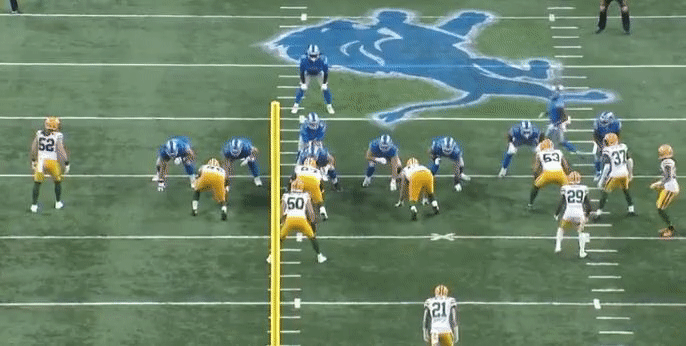
How the turnover battle was won
Two of the game’s biggest plays were Rodgers’ fumbles, forced by Romeo Okwara and Da’Shawn Hand, both recovered by the Lions. Here’s why each play worked.
The first came on third-and-seven, in the first quarter. The Lions have done a nice job, all season, scheming up coverage to slow opponents on third down. This was no exception. The team’s Cover-1 robber look took away two of Rodgers’ options, with Nevin Lawson blanketing receiver Marquez Valdes-Scantling on the left side of the field and DeShawn Shead sticking with tight end Jimmy Graham through a deep corner route to the right, aided by over-the-top coverage from deep safety Glover Quin.
Detroit also benefited from poor execution by the Packers, when Adams collided with Williams, coming out of the backfield, scrubbing both options from the play.
Okwara, rushing from Rodgers’ left, came wide off the edge. Sensing pressure, the quarterback bailed to his right. Had Adams not collided with his teammate while running a shallow crossing pattern, he likely would have been the target on the play, but it was just Graham to that side and he was covered. The quarterback tried to extend the play, signaling for Graham to come back to the ball, but Okwara quickly closed in backside pursuit to chop it free.
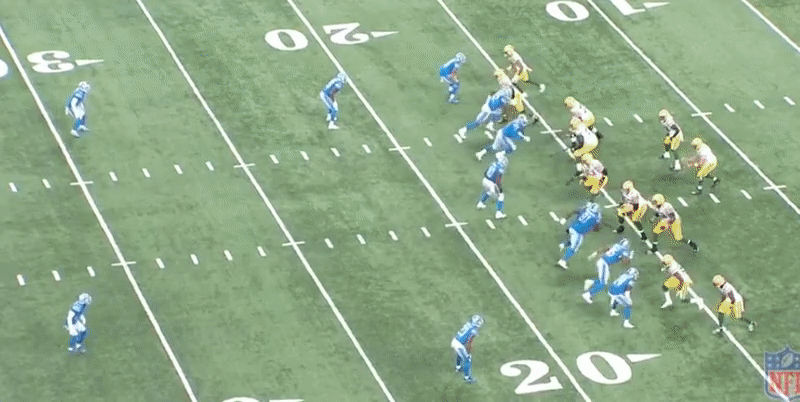
The second fumble came in the final minute of the second half.
The Lions once again appear in a Cover-1 robber and do an excellent job covering Rodgers’ options immediately after the snap. The only open target is Ty Montgomery, out of the backfield, but Rodgers wasn't eyeing a short throw on this play given the game situation.
Not that there was time for the quarterback to progress through his reads.
Initially facing a double-team from the center and right guard, Hand knocked the center off balance with a rip move, simultaneous to the guard bailing on the double to help elsewhere. That left the rookie defensive tackle with a clear lane to Rodgers.
The punch out didn’t appear designed, but the aggressive wrap-up was enough to jar the ball loose, and Hand capped off his impressive individual effort, locating and getting to the ball to score the recovery.
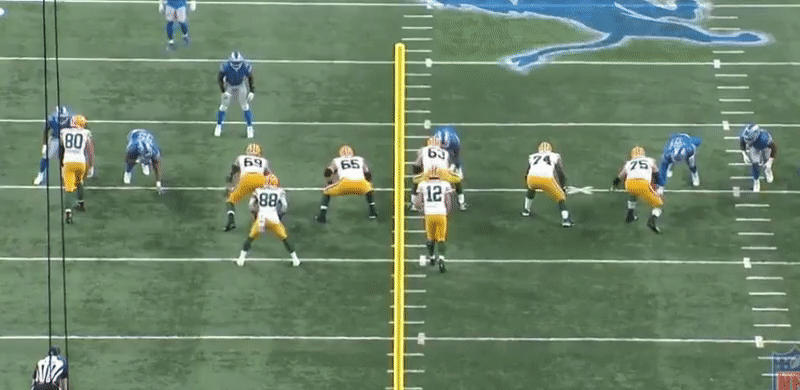
Lions need Lang
Who knows when T.J. Lang will be back. The guard is recovering from another concussion, the sixth documented during his pro career. When a back injury sidelined Lang against the 49ers in Week 2, replacement Kenny Wiggins more than held his own, but against the Packers' talented interior tandem of Mike Daniels and Kenny Clark, Wiggins’ deficiencies showed up again and again, showing how important Lang is to the offense’s overall success.
On Detroit’s opening possession alone, Wiggins fell short of executing his assignment on three separate runs. In total, Detroit had 62 offensive snaps, and I noted 11 where Wiggins was part of the reason the play didn’t go off as planned.
In the run game, his blocks often were shed easily, closing down run lanes and forcing the backs to redirect. In the pass game, Wiggins allowed pressure resulting in one of the team’s three sacks, and forced Stafford to avoid pressure on another, before the quarterback fired long on a deep throw to Tate.
Pro Football Focus confirms what the film was showing. They had Wiggins with the team’s worst pass block and run block grades this week and the line’s worst run-block grade for the season.
jdrogers@detroitnews.com
Twitter: @Justin_Rogers